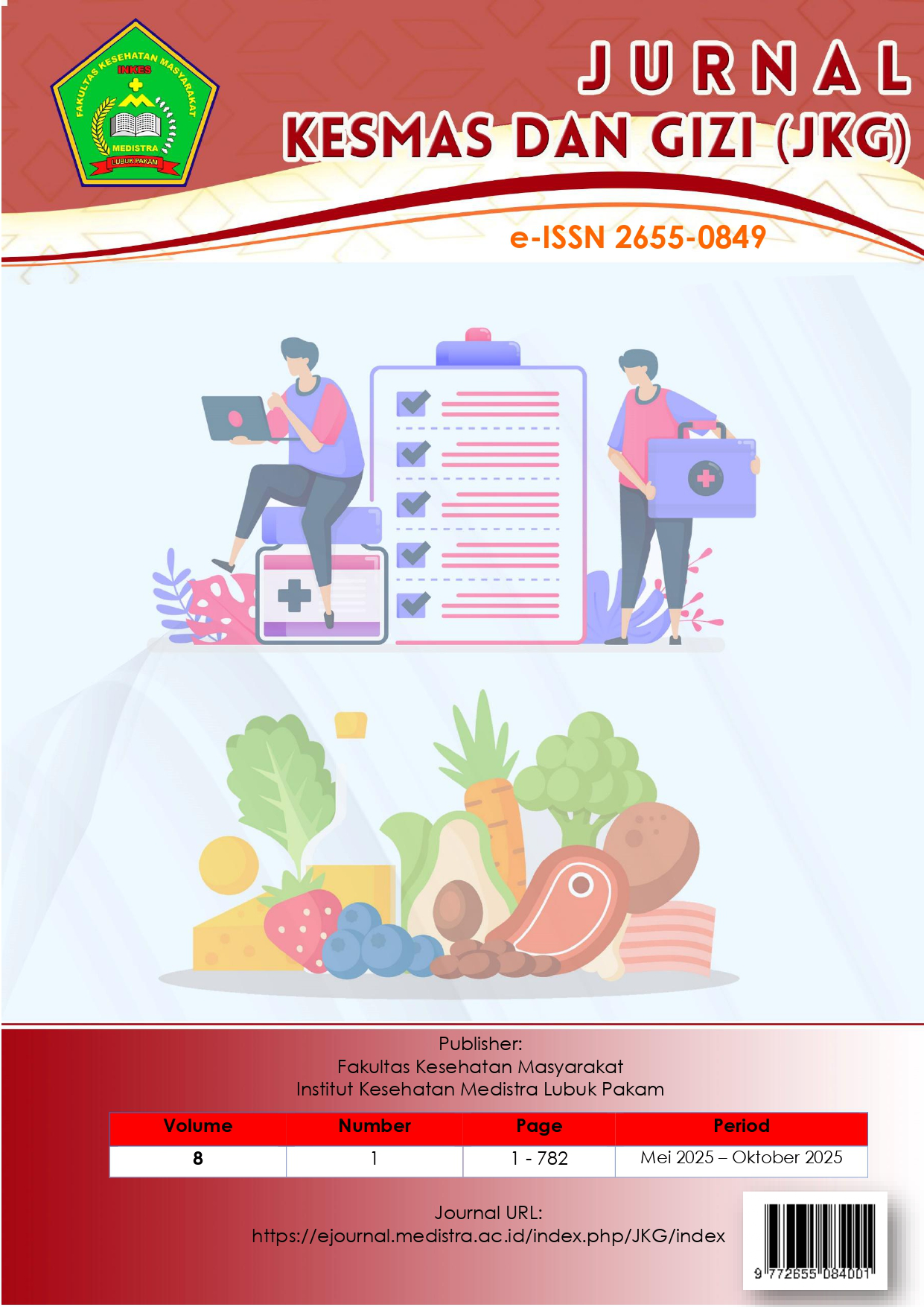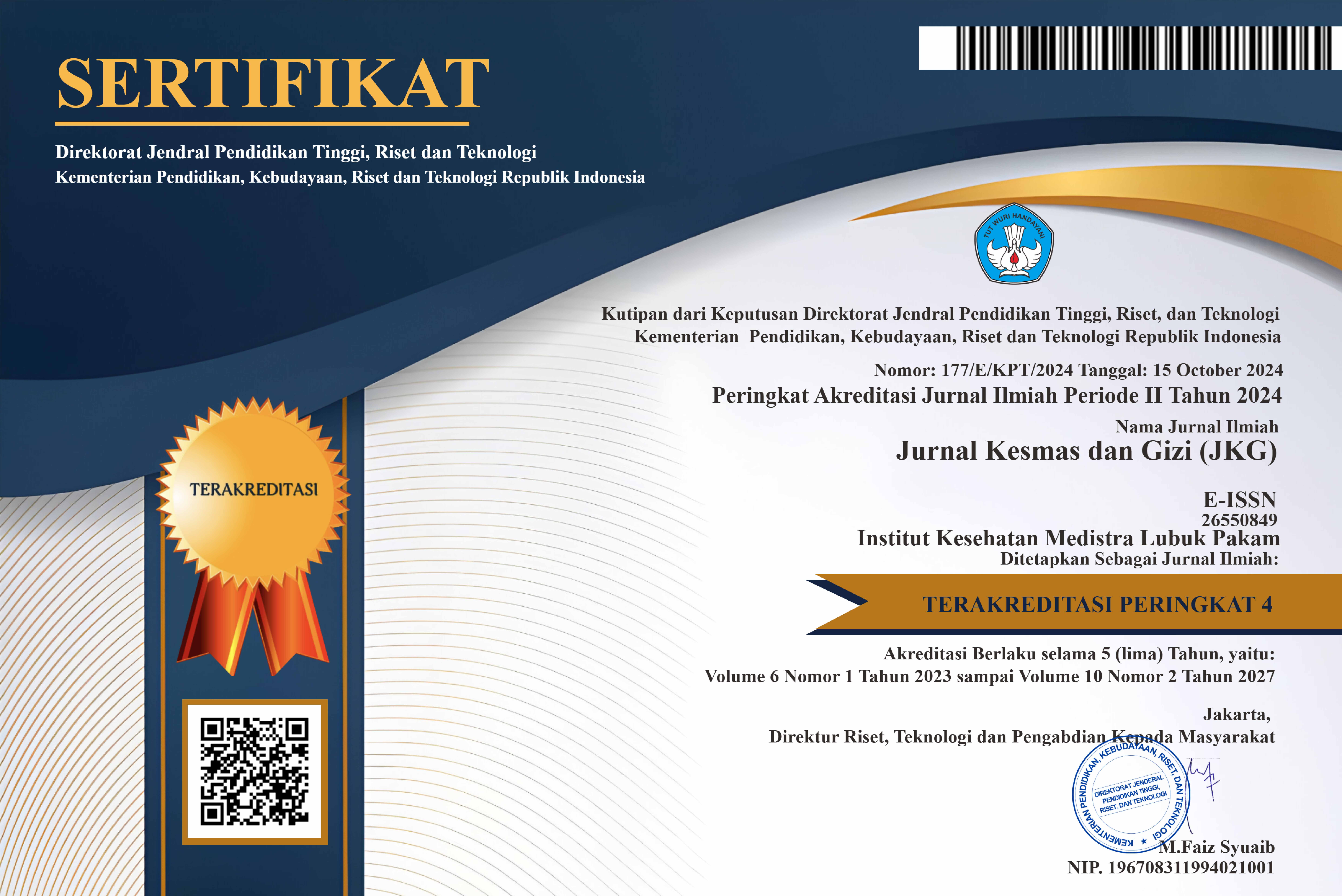The Role of an Integrated Administration System in Reducing Patient Waiting Times in the Emergency Department at Grandmed Hospital Lubuk Pakam in 2025
DOI:
https://doi.org/10.35451/fnrvh047Keywords:
sistem administrasi terintegrasi, waktu tunggu pasien, ugd, efisiensi pelayanan, rumah sakitAbstract
The Emergency Department (ED) is a vital hospital service that is required to provide fast, accurate, and efficient care. However, administrative processes that are not fully integrated often prolong patient waiting times. This study aims to analyze the role of integrated administrative systems in reducing patient waiting times at the ED of Grandmed Hospital Lubuk Pakam in 2025. A quantitative research design with a cross-sectional approach was applied, involving 100 patients and 20 administrative staff selected through purposive sampling. Data were collected through patient waiting time observations, staff perception questionnaires, and hospital documents. The results showed that most staff assessed the integrated administrative system as effective (75%). The average patient waiting time decreased from 7 minutes to 4 minutes after the system was implemented, meeting the Indonesian Ministry of Health’s service standard (≤5 minutes). Spearman correlation analysis revealed a significant relationship between administrative system effectiveness and patient waiting time (p = 0.002; r = –0.521). Simple linear regression further indicated that the effectiveness of the administrative system significantly contributed to reducing patient waiting times, with an effect size of 37% (R² = 0.37). In conclusion, the integrated administrative system plays an important role in improving the efficiency of ED services by reducing patient waiting times, and its continuous optimization is strongly recommended.
Downloads
References
[1] World Health Organization (WHO). (2020). Human resources for health and health system performance. Geneva: WHO.
[2] Graban, M. (2016). Lean Hospitals: Improving Quality, Patient Safety, and Employee Engagement (3rd ed.). CRC Press.
[3] Kim, Y., & Park, S. (2021). Human resource management and hospital performance: Evidence from South Korea. BMC Health Services Research, 21(1), 1–10. https://doi.org/10.1186/s12913-021-06218-1
[4] Osei-Frimpong, K., & Wilson, A. (2020). Healthcare administration and service delivery: The role of human capital. Journal of Health Organization and Management, 34(3), 301–318. https://doi.org/10.1108/JHOM-10-2019-0307
[5] Hartini, S., & Nugroho, A. (2023). Pengaruh pelatihan dan motivasi kerja terhadap kinerja pegawai administrasi rumah sakit. Jurnal Manajemen Pelayanan Kesehatan, 26(2), 112–120
[6] Sugiyono. (2022). Metode Penelitian Kuantitatif, Kualitatif, dan R&D. Bandung: Alfabeta.
[7] Notoatmodjo, S. (2018). Metodologi Penelitian Kesehatan. Jakarta: Rineka Cipta.
[8] Robbins, S. P., & Judge, T. A. (2019). Organizational Behavior (18th ed.). Pearson Education.
[9] Widyastuti, R. (2021). Faktor-faktor yang memengaruhi kinerja pegawai administrasi rumah sakit: Motivasi, lingkungan kerja, dan kompetensi. Jurnal Manajemen Kesehatan Indonesia, 9(1), 45–56.
[10] Kementerian Kesehatan Republik Indonesia. (2016). Peraturan Menteri Kesehatan Nomor 129 Tahun 2008 tentang Standar Pelayanan Minimal Rumah Sakit. Jakarta: Kemenkes RI.
[11] Al Awaisi, H., Cooke, H., & Pryjmachuk, S. (2021). The impact of training and development on employee performance in healthcare organizations: A systematic review. International Journal of Healthcare Management, 14(3), 897–907. https://doi.org/10.1080/20479700.2019.1708535
[12] Khaliq, A., Walston, S., & Thompson, D. M. (2020). The effects of hospital human resource competencies on organizational performance. Health Care Management Review, 45(2), 123–132. https://doi.org/10.1097/HMR.0000000000000216
[13] Priyono, A., & Wulandari, D. (2022). Kompetensi SDM dan pengaruhnya terhadap kualitas pelayanan administrasi di rumah sakit daerah. Jurnal Administrasi Rumah Sakit Indonesia, 8(1), 33–41
[14] Hartati, T., & Rahayu, S. (2022). Implementasi sistem informasi manajemen rumah sakit (SIMRS) dalam meningkatkan mutu pelayanan administrasi. Jurnal Kesehatan Masyarakat Andalas, 16(2), 112–120
[15] Kim, H., & Kang, S. (2022). Digital health systems and emergency department efficiency: Evidence from South Korea. International Journal of Environmental Research and Public Health, 19(4), 2105. https://doi.org/10.3390/ijerph19042105
[16] Dwiastuti, R., & Fitriani, E. (2023). Kompetensi dan kinerja staf administrasi rumah sakit di era JKN: Tantangan dan peluang. Jurnal Kebijakan dan Manajemen Kesehatan, 11(1), 55–66
[17] Ghosh, S., & Gupta, A. (2021). Reducing patient waiting time in emergency departments: A review of strategies. Journal of Emergency Medicine, 60(4), 472–480. https://doi.org/10.1016/j.jemermed.2020.11.009
[18] Yuliana, R., & Putra, A. (2022). Hubungan penerapan SIMRS dengan efektivitas pelayanan administrasi pasien rawat jalan. Jurnal Informasi Kesehatan Indonesia, 8(1), 22–31.
[19] Olanrewaju, F. O., & Ajayi, I. O. (2021). Health information systems and patient satisfaction in emergency departments. BMC Medical Informatics and Decision Making, 21(1), 1–12. https://doi.org/10.1186/s12911-021-01574-8
[20] Handayani, P. W., Hidayanto, A. N., & Budi, I. (2020). Hospital information system implementation and its impact on patient care: Evidence from Indonesia. Health Policy and Technology, 9(4), 100452. https://doi.org/10.1016/j.hlpt.2020.100452
Downloads
Published
Issue
Section
License
Copyright (c) 2025 Rahmad Ramadhan Ritonga, Arif Sujatmiko, Putri Sari Maharani

This work is licensed under a Creative Commons Attribution 4.0 International License.
Copyright in each article is the property of the Author.


























